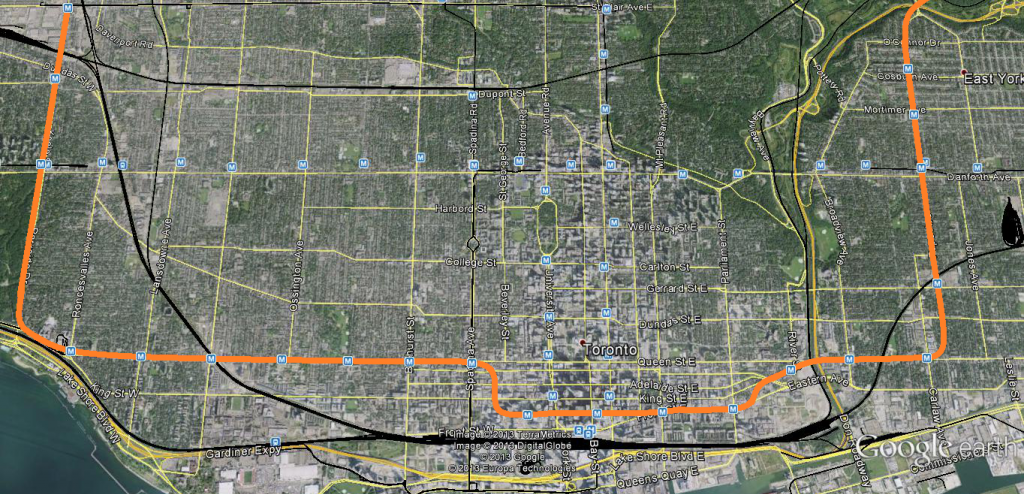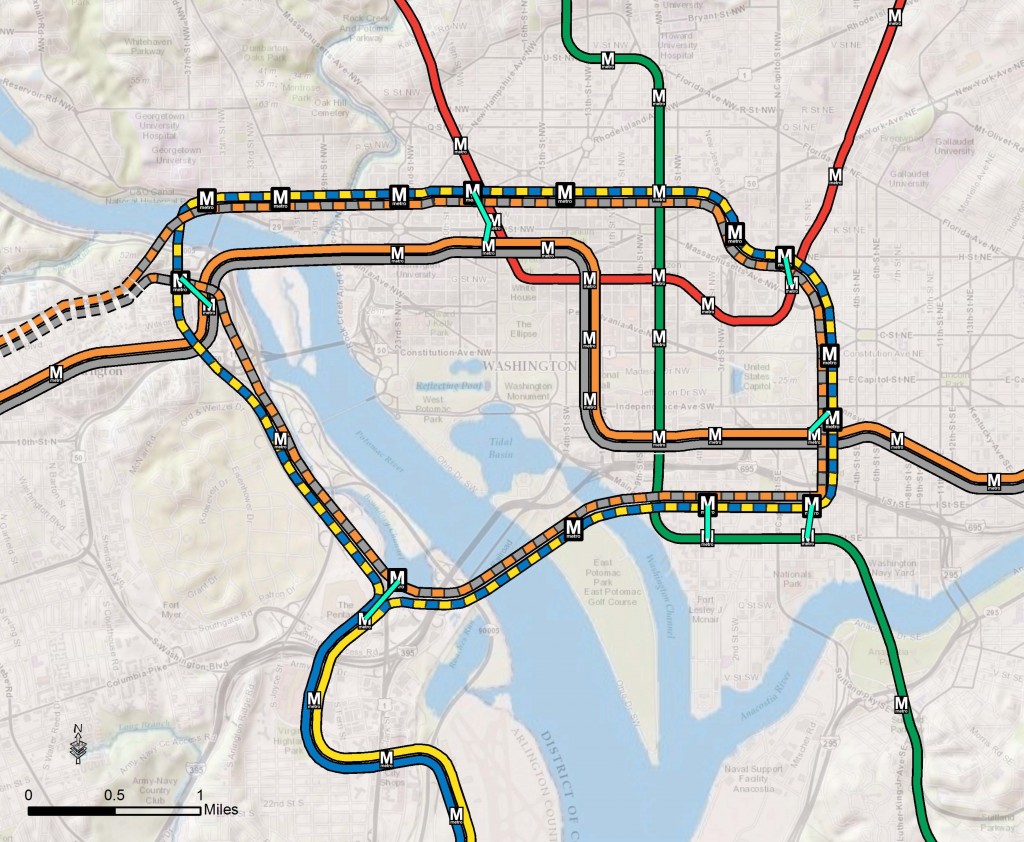Hopkins123
Senior Member
I really don't think this is the case and we have two good counter cases in Toronto on Yonge and Bloor.
How the DRL interacts with existing surface transit is, of course, kind of ambiguous at this point for a number of reasons.
As a general principal the more a surface route overlaps with the DRL, and the extent to which a the DRL has BD-style spacing in that segment, the greater odds are of getting replaced.
Second, surface routes should be altered (within practicality) to integrate with the DRL rather than the other way around since they're inherently more flexible. For instance, maybe planners decide the DRL should follow King east of the CBD, but Queen west of the CBD. In that case the 501 and 504 could be merged into a kind of 'downtown' route which would travel along King West and Queen East, crossing up Church or something.
You mean something like this?:

Per this alignment the 501 Queen could be permanently split into two parts, one starting from Roncesvalles heading west to Long Branch, the other starting from Charlotte Loop then up Spadina via Spadina-Queen Stn to Neville Park. The 504 King could continue as is from Dundas West down Roncesvalles and across King to Charlotte Loop, interlining with the 501 thereafter to carry onwards to Neville Park. Broadview would get it's own designated streetcar route number, possibly interlined with the new Cherry St streetcar to provide a true north-south anchor route in the east end, that or service south of Dundas Street on Broadview is eliminated.

